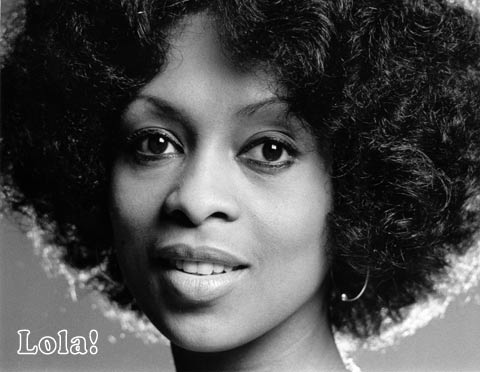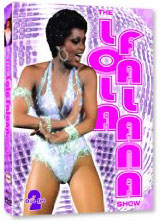




|
|||||||
 |
 |
 |
 |
 |
|||
by Billy Ingram She was born Loletha Elaine Falana on September 11, 1942 in Camden, New Jersey but you may know her as Lola Falana, an entertainer who's career is - or was - the stuff of legends.
That was before Sammy Davis, Jr. plucked her from an Atlantic City chorus line to make her his protege; casting Lola as the lead dancer / ingenue in his Broadway smash Golden Boy, which ran from October 20, 1964 until March 5, 1966. She was big talent in a small package, a triple-threat dynamo who could do it all - act, sing and dance. Lola Falana released a single called "My Baby" on Mercury Records and this led to her primetime solo debut on Hullabaloo December 6, 1965 where she sang the single and "Loverly" from My Fair Lady. She moved over to Warner Brothers records in 1966.
Davis also introduced Lola to the world of Las Vegas where she quickly scored a gig opening for comic Don Adams at the Sands Hotel where Sammy often worked. Lola attained movie stardom first in Italy where she was hailed as the "Black Venus." Her first picture there was a 1967 Spaghetti Western, Lola Colt: Face to Face With The Devil. Two more Italian films followed, Stasera Mi Butto and Quando Dico Che Ti Amo in 1968. In between productions she toured as a background singer / dancer with Sammy Davis, Jr. and traveled with him to London for a revival of Golden Boy; it was while on-stage that the cast learned of the murder of Dr. Martin Luther King on April 4, 1968. Falana split with Sammy in 1969 but not before a sizzling star turn in the one-hour special, The Swinging World of Sammy Davis, Jr. "If I didn't break away," Lola told TV Guide, "I would always be known as the little dancer with Sammy Davis, Jr. I wanted to be known as something more." On November 16, 1969, Lola was seen a dramatic role along with Billy Dee Williams on The FBI in addition to musical comedy appearances on The Hollywood Palace and the Joey Bishop Show.
LOLA FALANA SUPERSTAR
Her first American big screen starring role occurred in The Liberation of LB Jones, directed by the legendary William Wyler in 1970.
Wyler teamed Lola with Lee Majors (6 Million Dollar Man), Lee J. Cobb, Yaphet Kotto, Barbara Hershey and Anthony Zerbe in a sticky story of murder, adultery and bigotry in a small town (is there any other kind of town in the South?). Famous for his work with the greatest screen actresses of all time - stars like Bette Davis, Merle Oberon and Barbra Streisand - this was Wyler's disappointing follow-up to the box office smash Funny Girl. It would be his last motion picture, he died soon after. Screenwriter Sterling Silliphant described The Liberation of LB Jones as dealing with a rich Black man (Roscoe Lee Browne), "who is cuckolded by a white man and who, as a man cherishing his dignity, demands that his white lawyer get him a divorce - an action that uncovers a a barrel of civil rights fish in a Southern town..." Lola costarred as the two-timing wife who ignites a race war by having an affair with a white cop. One reviewer proclaimed The Liberation of LB Jones, "the first American movie to countenance and even condone bloody revenge by the black against his white oppressor." Director Wyler stated his simple intent, "I wanted the audience to go out with a sense of guilt, of embarrassment at knowing what was going on and perhaps a feeling that they should do something."
Flip: "Lola, do you have a boyfriend?" Lola: "No." Flip:" Maybe it's because you use too many four letter words. Like don't, can't, won't." She was photographed in the nude for a Playboy spread that year to promote the film and increase visibility - so to speak - for her career. In 1971, she announced her marriage to Feliciano Tavares, a musician from Cape Cod and began a string of eight appearances on The Tonight Show with Johnny Carson between November, 1971 and December, 1972.
Cosby met Lola back in his college days, when he was a struggling comic and she was all of 14 years old dancing in the Philadelphia nightclubs for ten bucks a show. With Lola Falana's saucy gyrations and music provided by the superlative Quincy Jones Orchestra, The New Bill Cosby Show was one of the funniest and freshest programs of the 71-72 season. Produced by Laugh-In creator George Schlatter, this highly-entertaining program had Lola serving as announcer and acting in skits as well. The show lasted only one full season but Falana and Cosby appeared together again on TV several times during the seventies. That
hand grenade of a woman Lola's next motion picture, The Burning Cross (better known as The Klansman), was directed by Terrence Young, the man behind two of the best James Bond films, Dr. No and Thunderball. Another violent race based movie set in the South, The Burning Cross thrust Lola together with Richard Burton, Lee Marvin and O.J. Simpson in a graphically violent potboiler; mid-seventies Drive-in fare. The Burning Cross was intended to be a higher quality film than most movies considered a part of the Blacksploitation genre, which was in full swing by 1974. Both Burton and Marvin were rip-roaring drunk throughout the entire production, and the movie was fronted by an exploitative ad campaign that screamed: "Red necks. White hoods. And raped black girls. O.J.'s grabbing a gun and going to war."
This obscure 1975 film featured football players Gene Washington, Alex Dreier and Mean Joe Greene; footballers were popular actors in the Blacksploitation genre. Lola had a minor disco hit in 1975, "There's A Man Out There Somewhere." That same year she entered into what must have seemed like a dream project - returning to the Broadway stage as the lead in a new musical, Doctor Jazz. With music and arrangements by Buster Davis & Luther Henderson and orchestrations by Dick Hyman & Sy Oliver, Doctor Jazz should have been a winner. Jazz music was popular again and the nation was in the throws of a nostalgia craze in 1975; but Doctor Jazz failed to click and closed after five performances in four days.
Single-again, Lola could be seen staring out from the cover of Jet magazine in 1975. "Sex is easy to take," she told Jet readers. "Love is hard to give." Lola was booked on the Tonight Show June 4th, then landed a regular spot on Ben Vereen's August, 1975 NBC summer replacement series, Comin' at Cha. This was a natural pairing as Vereen had just come off the Tony Award-winning Broadway musical Pippin. She was also seen on Sammy and Company, Sammy Davis Jr's talk variety show taped at Harrah's Casino in Lake Tahoe.
|

Singer Dancer Lola Falana conquered not only television... she was a Broadway star and one of the most popular acts on the Las Vegas Strip and Lake Tahoe casinos!
Article about Lola Falana's charity work DID
YOU KNOW? Lola Falana's last network primetime appearance was as Casey's Secretary in a 1990 episode of Mad About You. She was also seen on Sammy Davis, Jr. 60th Anniversary Celebration in 1990.
|
|